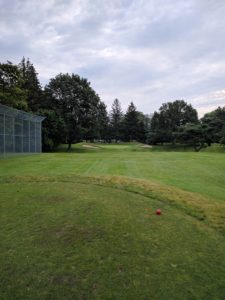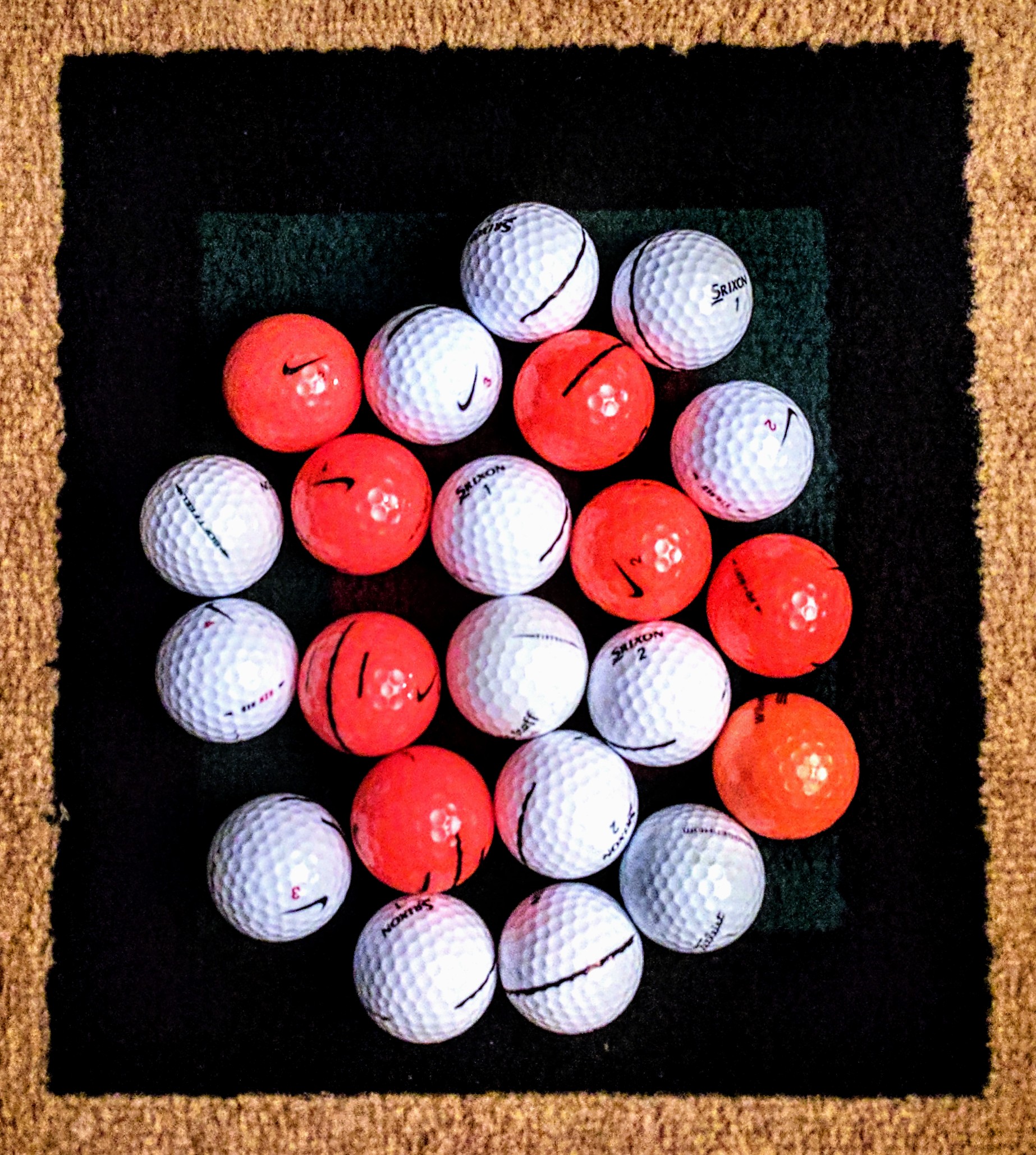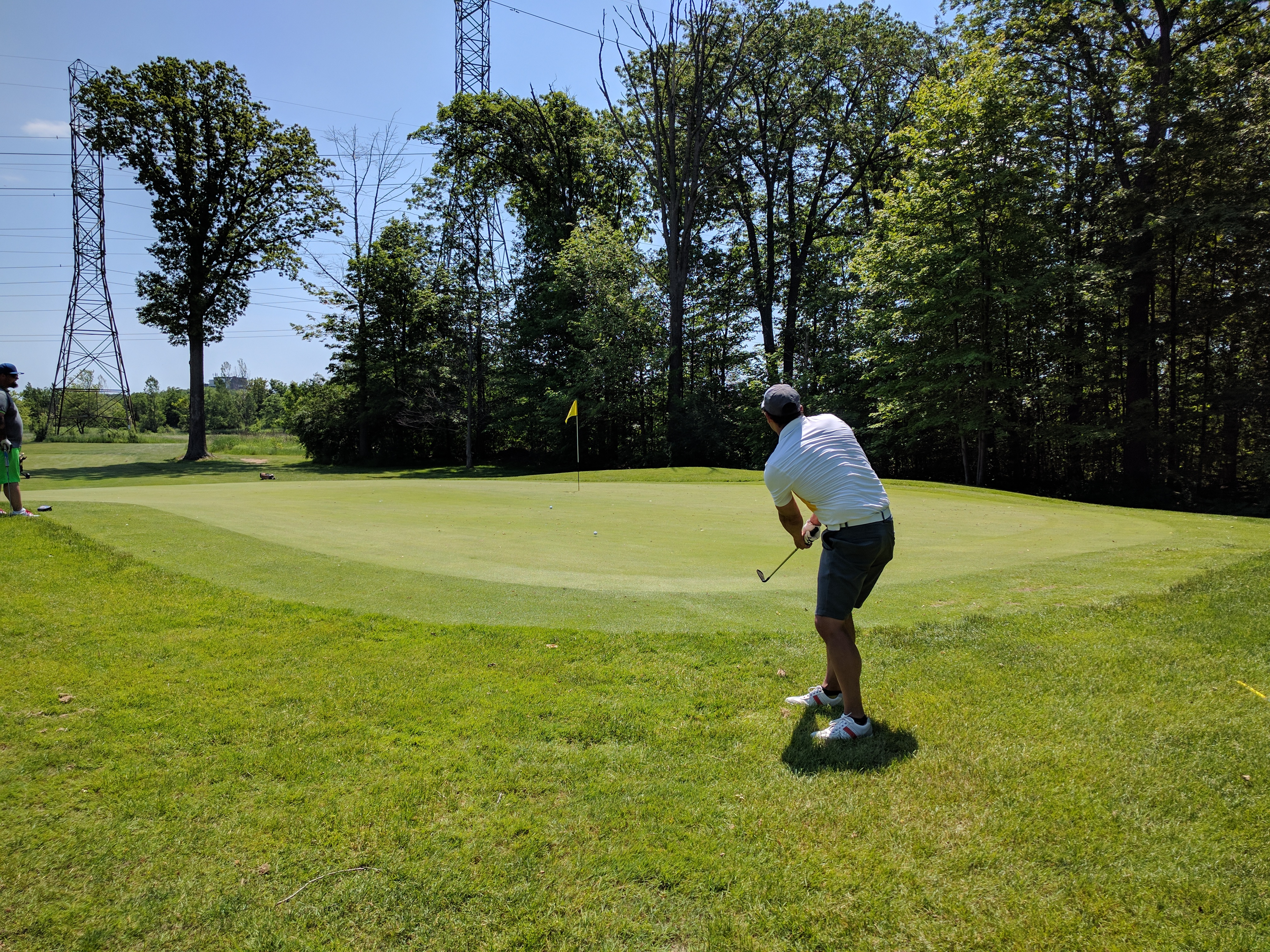The most enjoyable two hours of Golf you can play in Toronto.
Dentonia Golf course
There isn’t a more accessible Golf course by TTC than Dentonia. Step out of the Victoria Park subway station, and there it is. It is actually right next door. The two properties actually share a fence it’s that close..
Although it’s a short course. It’s only 2100 yards long from the back Tees. The 18 Par 3s that make up the course provide more than enough of a challenge. Well positioned Bunkers, trees that can impede your flight path, elevation changes, and Greens with a lot of break make going low through 18 Holes a real test. I’m such a glutton for punishment that I try to play Dentonia once per week. I play this course so often that I figured that it was about time I did a hole by hole review of it.
Something I would strongly suggest that you have to carry your clubs around with you on a short course like Dentonia is a Sunday bag. They are light, have enough space for the few clubs you will need. Make sure you purchase one with a few additional utility pockets, and a shoulder strap. I also find them great for the Range. I usually only bring a few clubs with me that I’m interested in working on. Here’s a great example available on Amazon that qualifies for Free shipping as of the publishing of this post.
HOLE 1

Your first hole at Dentonia sets the tone for what is to come. Depending on the Tee, and Pin placement this hole plays at around 110 yards. The course played a little shorter today because the Grounds Crew were making repairs to a number of the Tee boxes.
Looking at the approach to the Green you’ll notice that it’s downhill from the Tee box with a deep gully between you, and the Green. The Green sits in a bit of a bowl with the high sides along the right side, and back. A bunker sits back left of the Green in case a Lefty like me misjudges the distance, and slices it.
HOLE 2

After what may have been a difficult first hole. Especially if you hit it long into the back hill behind the Green. The first Green slopes downward from back to front. Chipping from behind the Green is a very tricky affair.
The second hole looks like an easy task at first glance. Take a closer look, and you will realize that missing the Green is not an option. Today the hole played 95 yards to the flag. Miss left and there’s a bunker waiting. Miss right and there’s a slope that’s steep enough to leave your ball under a grouping of trees. Miss it long, and you could find yourself in serious trouble. Brutal rough, and Trees can leave you with an impossible second shot. Do yourself a favour. Land it short, or better yet, get yourself a Green in Regulation.
HOLE 3

Looking at the Green from the Tee box on the third hole. The first thing that you will notice is that the third Green is cut into the side of a hill. Everything slopes downward from the left side to the right. Today it was playing 90 yards long slightly down from an elevated Tee. In other words it was begging me to hit my 52 degree Wedge. Missing left, which is my usual miss isn’t so bad here. A good kick off the hill will land you on the Green. Don’t miss right though. Two bunkers, and of course the hill that slopes away from the Green. These hazards can turn a Par 3 into a triple bogey right quick.
HOLE 4

Looks a little bit like the previous hole doesn’t it? Today this hole played 100 yards long. So it was a little longer than the previous hole. There are a few major differences though. The first, and most significant difference is if you miss the Green left, or long. Unlike the previous hole where hitting it left, or long could earn you a lucky bounce on to the Green. Hitting it left, or long here can result in a lost ball. Your only safe miss is to the right.
HOLE 5

The fifth hole is another one of the holes at Dentonia that rewards you for taking precise aim. Today it was playing at 115 yards long. Looking at the photo the hazards are obvious. Bunkers protect both the left, and right side. Trees can be an issue for people who like to shape their shots. Short right has a waste area that’s brutal to hit from. The only safe miss is long because the Green has a backstop of sorts.
HOLE 6

Similar in appearance to the first hole only longer with way more danger. The sixth hole was playing at 140 yards long today. There is a real danger of losing your ball on this hole. The stream cuts across your approach at an angle ready to gobble up any errant Tee shot. Carry the stream but come in left of the Green, and you can lose your ball in the woods as well. The only safe miss is to the right. You will leave yourself with a very easy chip up to the Green.
HOLE 7

There are a few holes at Dentonia that require you to hit off mats. Hole 7 is the first of these. Today the hole was playing 98 yards uphill from the back mat. Obviously if you come up short with your Tee shot. You will end up at the bottom of a steep hill. Hit your Tee shot left. There’s a very good chance that it can end up rolling down the cart path, and settling at the bottom of the hill. Miss hit your Tee shot right, and well good luck finding it. Hit it a little long, and there’s a good chance that it will kick back on to the Green.
HOLE 8

There’s that threatening gully between you, and the Green again. Playing 96 yards to the Flag. I was happy when my Tee shot flew long, and came to rest at the top of the hill behind the Green. Hitting it short leaves you in a world of trouble. Bunker on the left, bunker on the right, and of course the gully in front dares you to play it to the front of the Green. Better to club up than down on this hole.
HOLE 9

There is trouble all around. That about sums up the ninth hole in five words. You’ve got bunkers protecting both sides, trees all across the back, and a large tree that blocks out a portion of the left side of the Green. Then of course there’s another gully across the front. Today it was playing 115 yards to the flag. I really hope that’s a good distance for you.
HOLE 10

This has been, and hopefully always will be an easy hole for me. Today was an unfortunate exception. Playing at 100 yards even today. The tenth hole has a bunker on each side of the Green. The bunker on the right is set far enough back for me to use my Pitching Wedge safely. I aim a little right of centre so I either catch the Green or land just off it before the bunker. Today I missed the Green and landed short of the bunker as usual. Only this time I landed in a particularly deep hole in the rough. Took me two chips to reach the Green. Two Putts later and I’m marking a double Bogey on my scorecard.
HOLE 11

One of the most picturesque, and intimidating holes on the course. It plays 185 yards to the Pin. It’s severely downhill though, so all you need to reach the Green is your 150 yard club. Running along the left side from Tee to Green is Woods. If you miss left you’ll be hitting another ball for your next shot. Hit it too far right, and you could end up in the stream I mentioned on Hole 6. You can come up short safely, which has happened to me many times. A truly well struck ball from the 11th Tee is something to behold though. So I say go for it.
HOLE 12

Playing at only 85 yards today. The 12th hole lets you relax after that crazy Tee shot on the 11th. There’s still a lot of trouble to avoid. You still have the Woods that run from Tee to Green along the left side. There’s a bunker protecting the right. Hit it long here, and you are probably down another ball. Honestly though, after playing the 11th hole. The 12th hole just seems easy. That’s how it felt for me today. I hit my Tee shot, and earned myself a Green in Regulation. Stepped up, and sunk my Putt for Birdie. Just goes to show you how much of this game is played in the mind. Confidence will always generate results.
HOLE 13

This hole looks a lot worse than it actually is. Sure it’s 130 yards long. The Green appears tiny because it’s framed by trees in the foreground. Actually once you are past those trees the area opens up. You can actually miss safely to the left, or right. You can even go a bit long left, or right as well. The only real danger is the stream in front, and Woods far back.
HOLE 14

This is by far the easiest hole on the course. Today it was playing at 95 yards to the flag. The only real danger is completely duffing your Tee shot into the stream in front of you. The Green does have a fair amount of slope though so I’ve yet to Birdie it.
HOLE 15

The other easy hole on the course. Not as easy as the previous hole because you can lose your ball long, and misses right tend to roll down towards the trees. Today it was playing much shorter than usual at 85 yards. Definitely a hole you should be looking to Birdie.
HOLE 16

Another hole that at first glance looks dangerous. It isn’t as bad as it seems. The trees along the left appear to block out the Green but once you are past them it opens up. The smart play here is to avoid potentially getting caught up in the branches on the left. Aim a little right where the mound just in front of the Green can provide a great kick on to the Green. Today it was playing at around 120 yards long. As long as you don’t hit it too far left you should leave yourself a decent second shot.
HOLE 17

Playing at 95 yards to the Pin today. The 17th hole is deceptively tricky. Part of this has to do with the yardage for me. It’s a bit too long for my 52 degree Wedge, but just a touch too short for my Pitching Wedge. With a bunker on the right, and trees along the back and left side. You might be tempted to aim for the front of the Green. Unfortunately it has a bit of a false front. The 17th Green is quite the complicated puzzle.
HOLE 18

The final hole on the course has been for me the most challenging. This hole is my nemesis. It’s a very rare occasion that I earn myself a Par on the 18th. There are bunkers in the front, and back. I’ve never landed a Tee shot in either one, so that’s not the problem. There are Woods along the left, and that’s my usual miss. Truth be told, I’ve never put it in the Woods here. So that’s not the issue either. The real issue is the Green. Unless I stick it close directly uphill, or downhill of the hole. The amount of slope on the 18th Green practically guarantees I three Putt. Your ability to read Greens will definitely be tested at Dentonia.
CONCLUSION
Depending on how busy it is, and how many people you play with? A Round of Golf at Dentonia should take between 2 to 3 hours. My friend Carlisle, and I have finished a Round in 110 minutes. Today’s Round took 2 hours and 15 minutes. If you are interested in playing a quick Round of Golf in Toronto. Dentonia is the perfect course for you. It’s never too busy during the week, and at $27 for 18 holes. It’s easily the most affordable Round of Golf that you can play in the GTA.



























